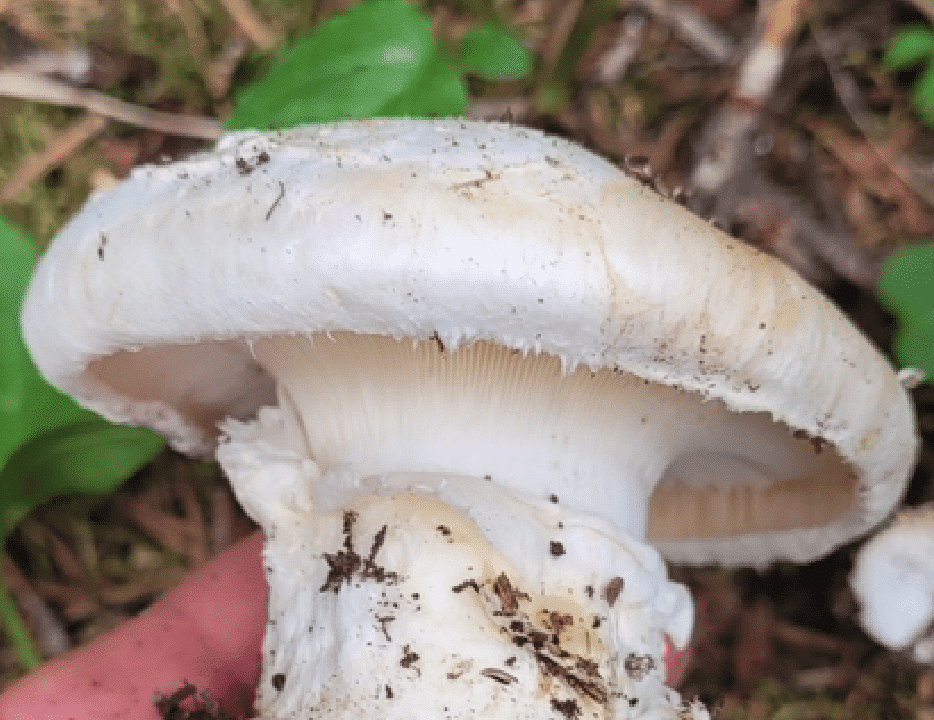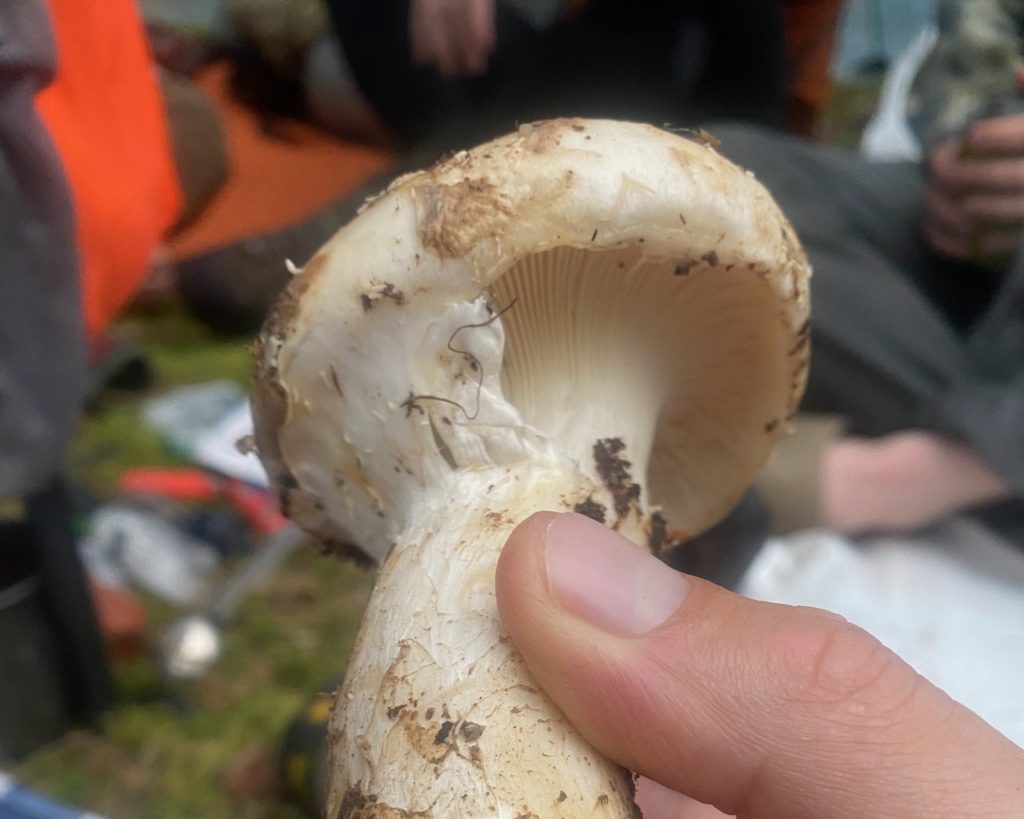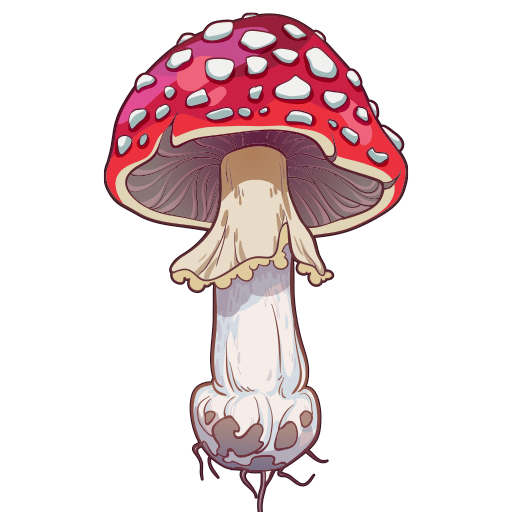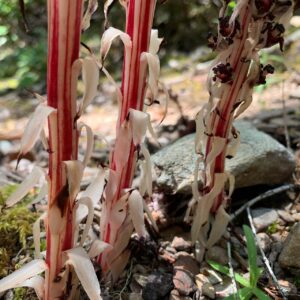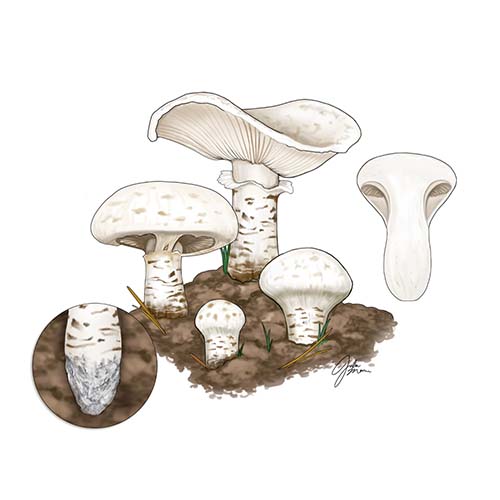
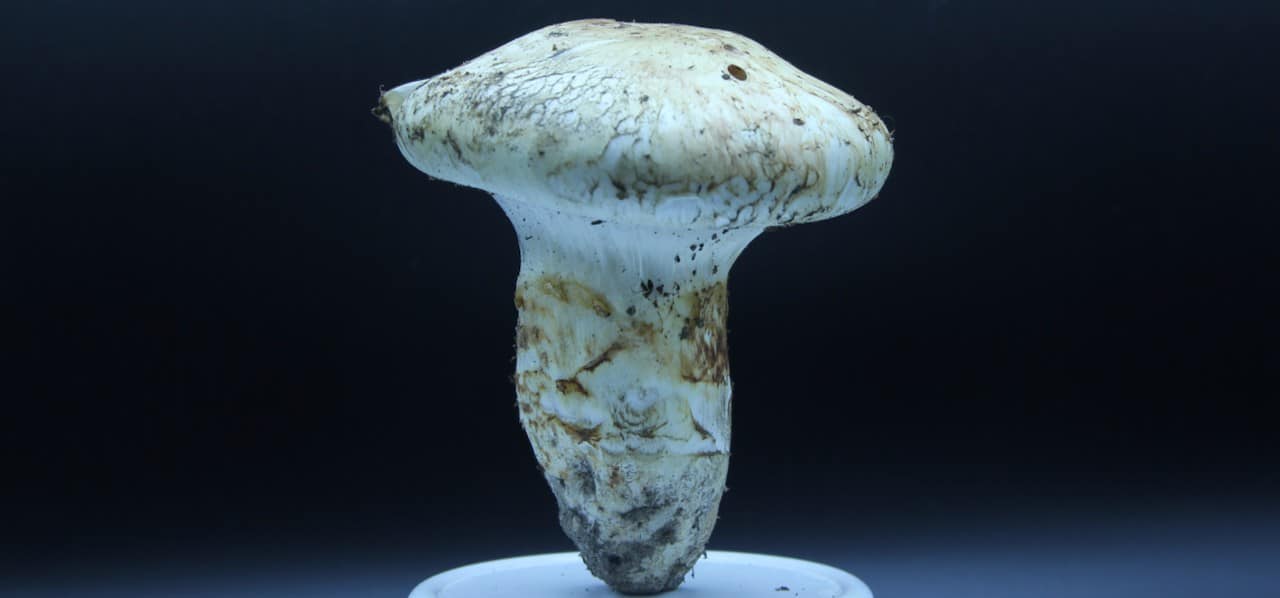
About
The matsutake is a highly regarded mushroom for its large size and unique spicy/funky aroma and flavor. Key features include
- large size
- fine fibrils enveloping the entire mushroom when young leaving
- a ring around the stem and
- pale fibrils on cap and stem (sometimes darkening with age or similar looking species)
- firm texture
- growth through a sandy ash layer known as spodosol or podzol
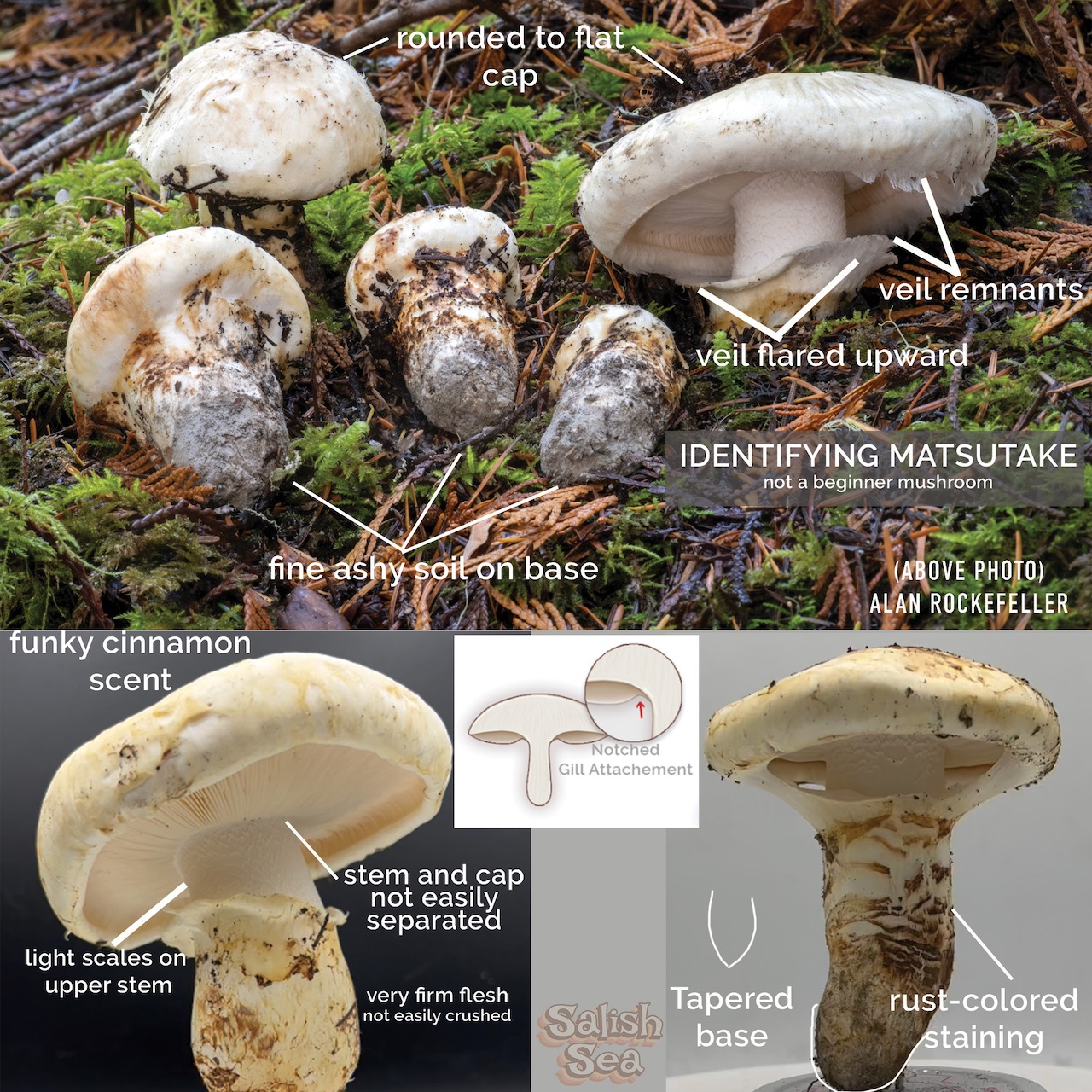

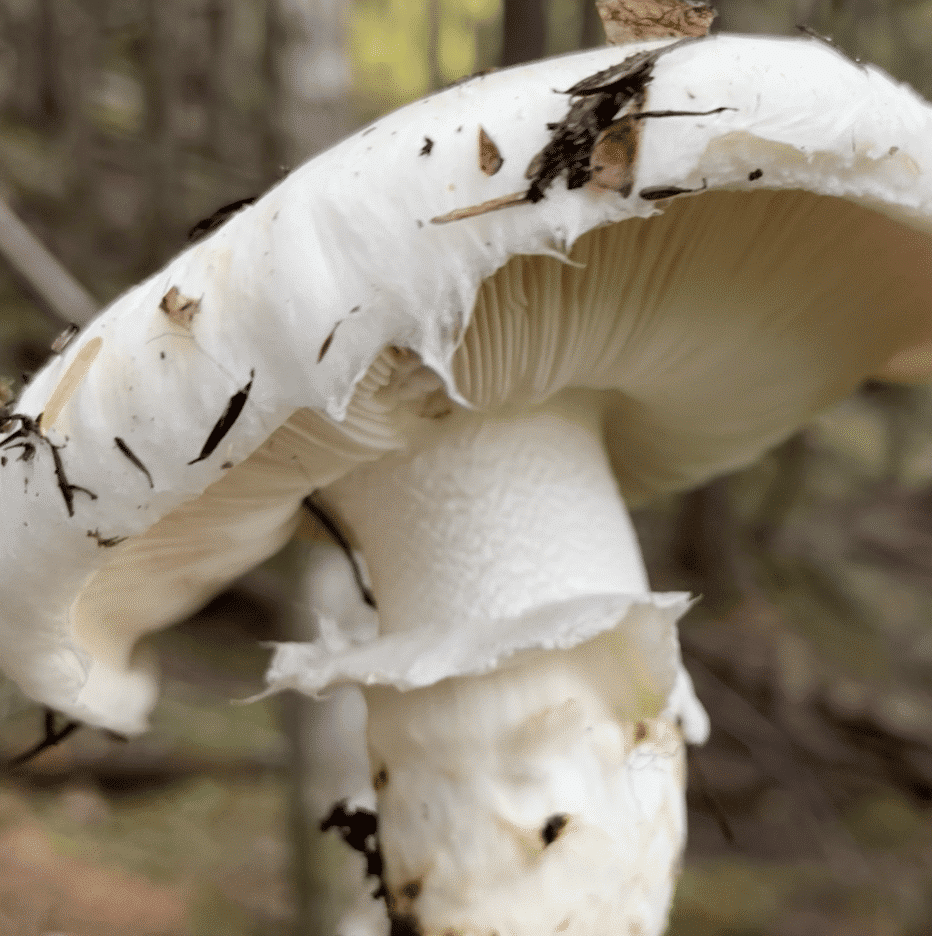
Cap
The cap is generally pale to cream-colored and covered in fine fibrils that remain from the universal veil that enveloped the young mushroom. These fibrils are typically light-colored but can darken with age to tan or cinnamon color. There is another similar-looking species that is generally darker
The cap margin is in-rolled and often retains remnants of veil tissue.
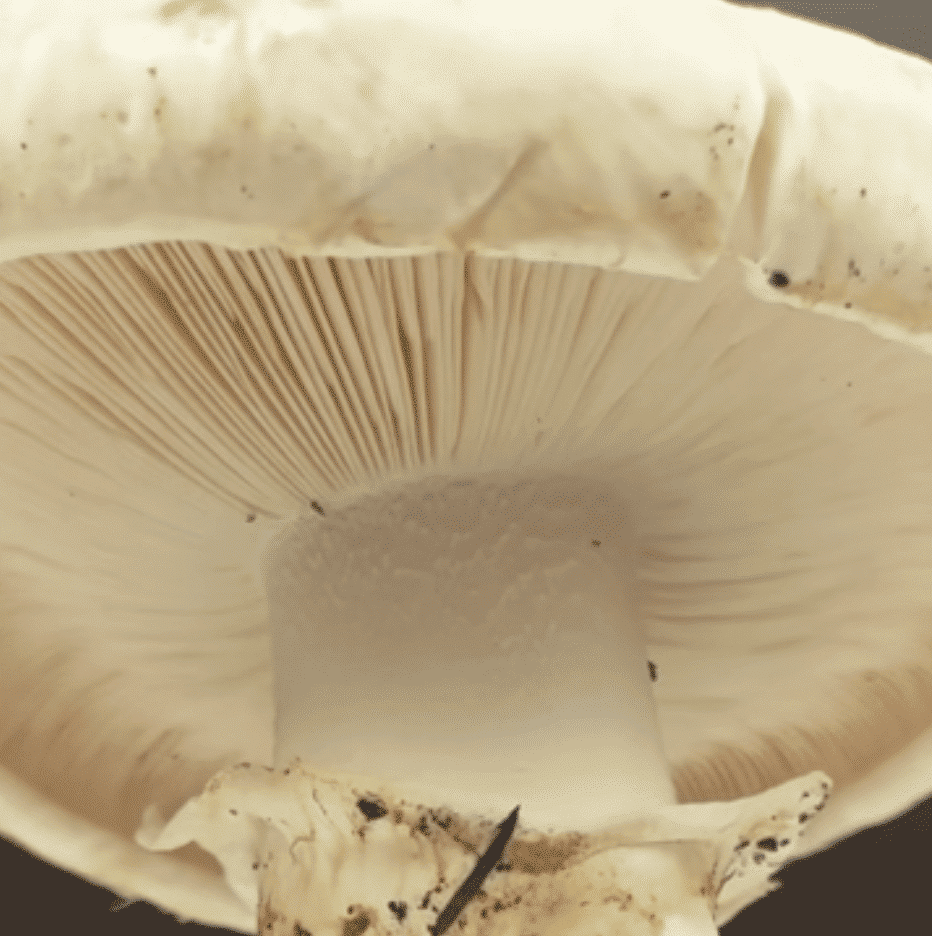
Gills
The gills are white and may turn slightly rust-colored with age. A key distinguishing characteristic from the similar-looking Catathelasma is with the gill attachment. The gills on Tricholoma murrillianum attach +/- squarely, sometimes with a notch. The gills should not be decurrent with a broad attachment down the length of the stem.


Veil
The veil is substantial an young matsutake can be found with the veil firmly intact. As the cap opens, remants of the veil will remain on both the cap as well as the stem. This tissue can darken with age
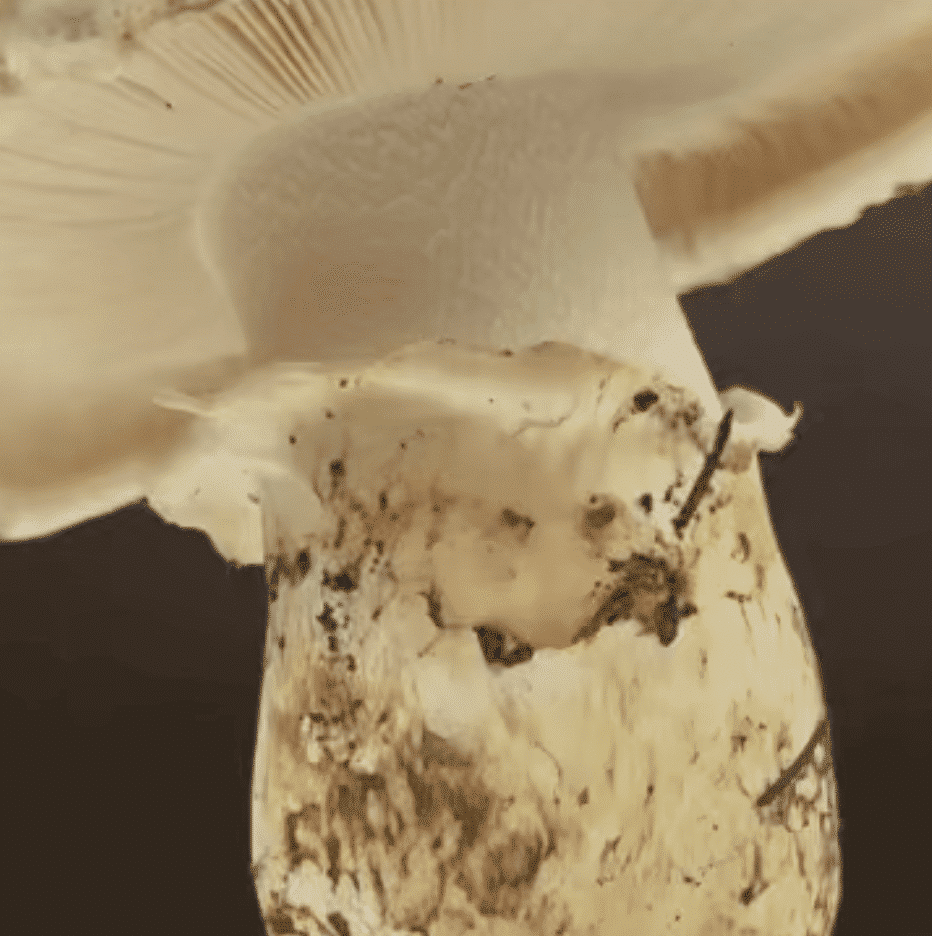
Stem
The stem is quite firm. It should not squish or break easily when pressure is applied. The shape is equal and tapers to a point underground. The lower part of the stem will be covered with veil remnants that take the appearance of darkened scales. The upper portion of the stem is free from these veil remnants and appears smooth and white.
Similar-looking Amanita mushrooms have veil remnants that are quite fragile and can be brushed away quite easily. Amanitas may have rings of tissue stacked along the base.
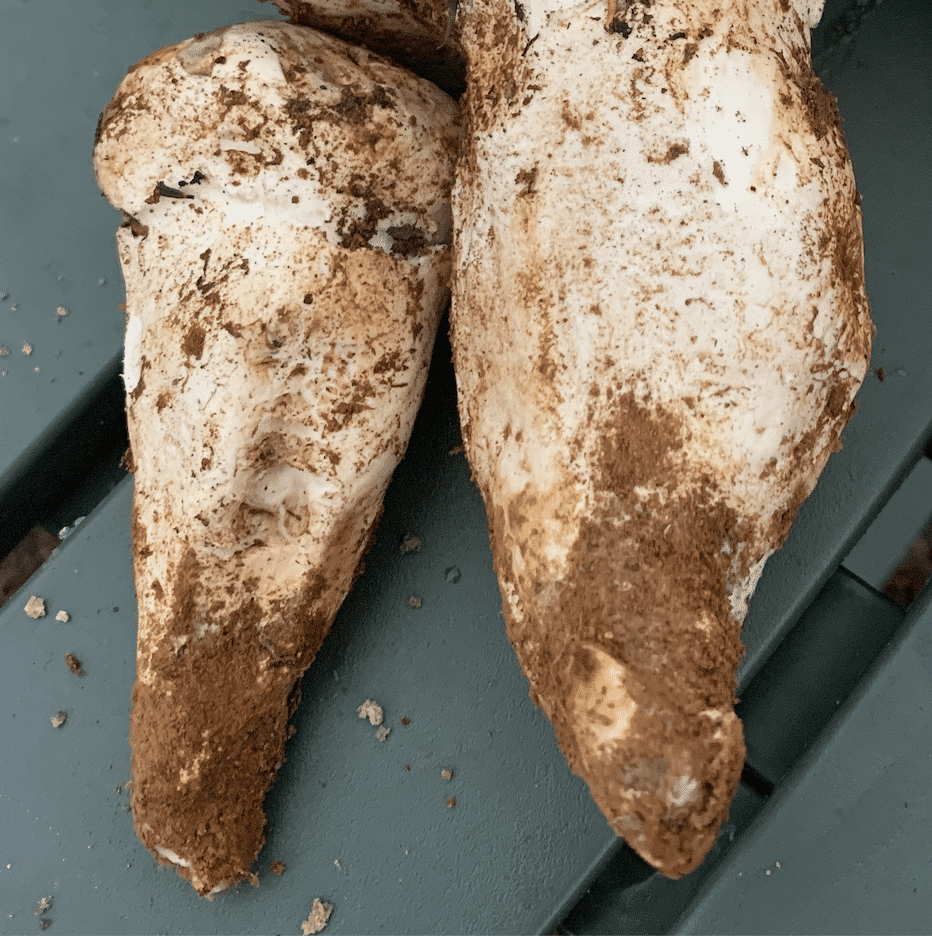
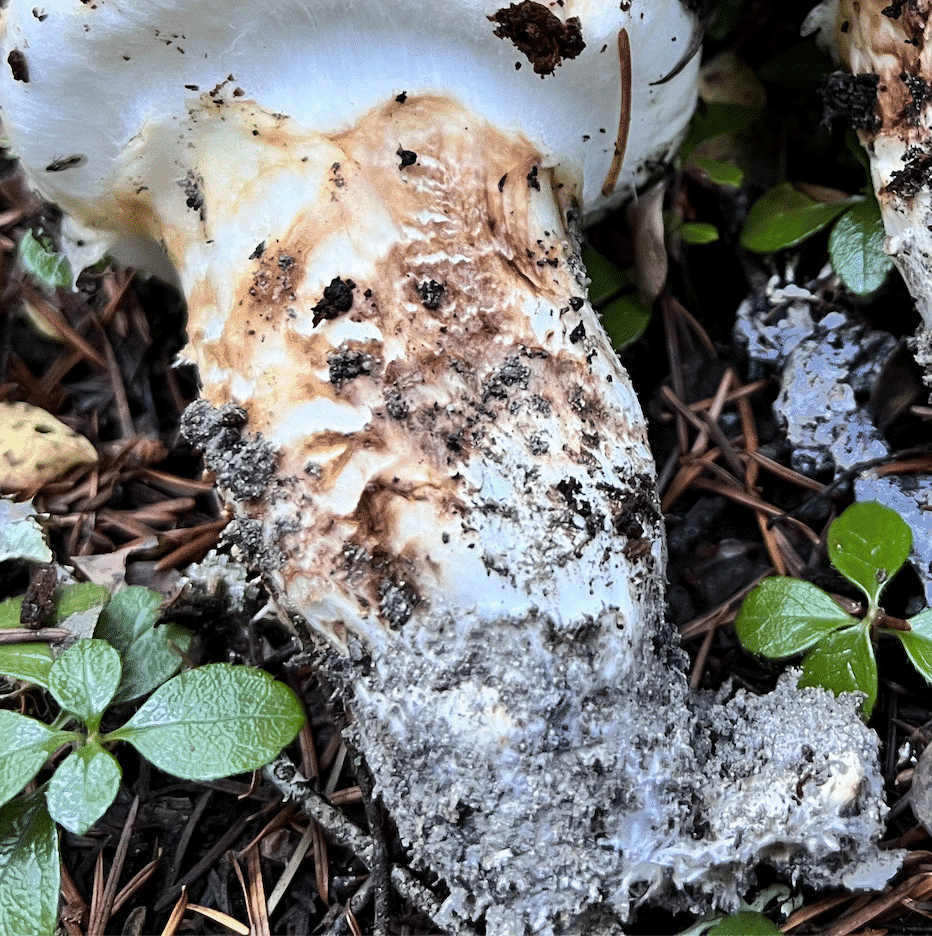
Base
The base often tapers to a point and is often rooted in a powdery, grey soil know as podzol. Very importantly, the base does not flare outwards or have an abrupt bulb.
Similar-looking Amanita mushrooms can have concentric rings around the bulb, or have an abrupt bulb shelf, or even just widen slightly before tapering to a point.
Distinguishing between these mushrooms can be difficult and will take practice.
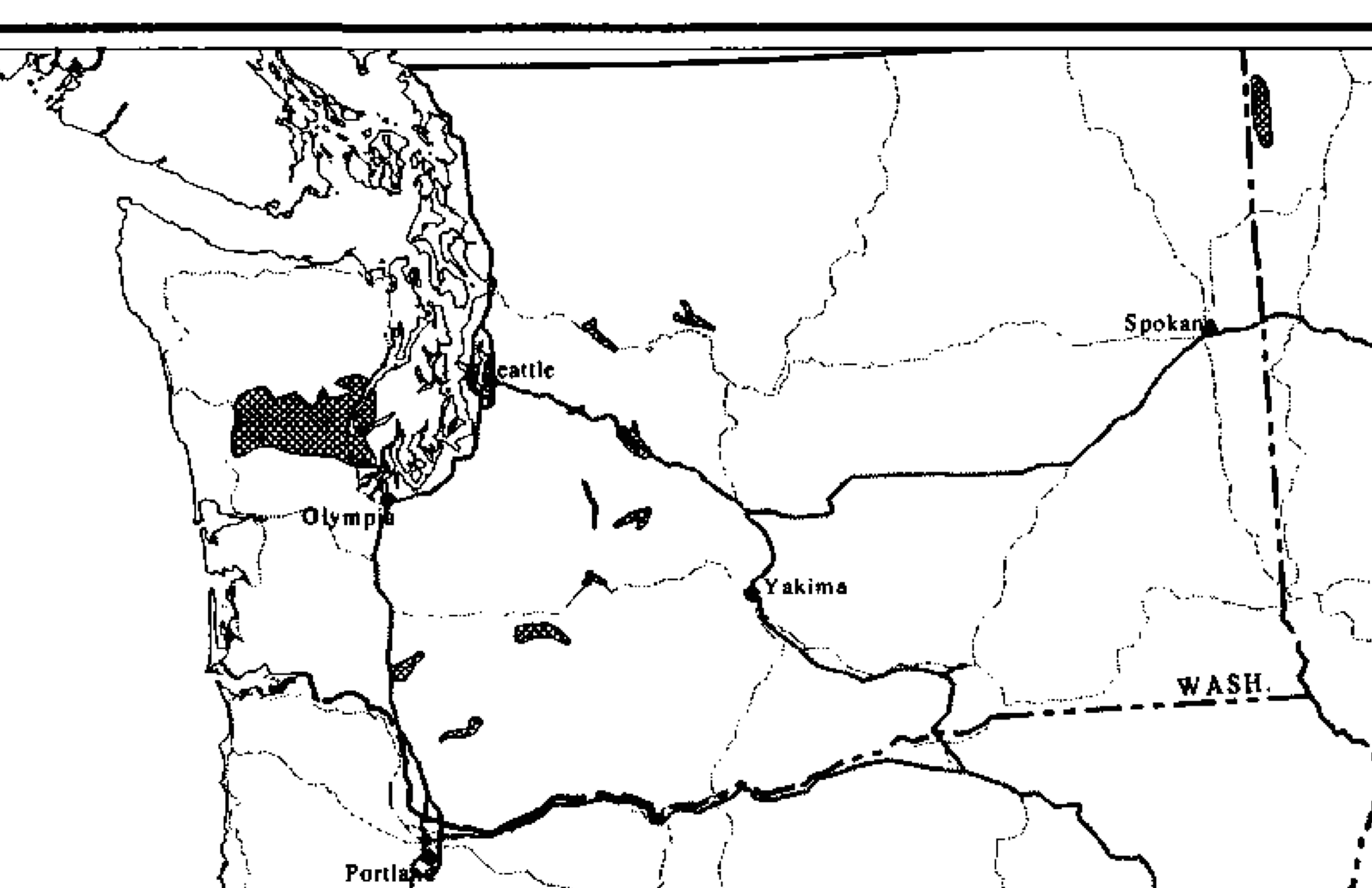
Where to find matsutake in Oregon and Washington
Matsutake are found in sandy soil along the Pacific coast as well as both sides of the Cascades from northern Washington to southern Oregon.
They are found with pines as well as other mixed conifer like Douglas Fir and Western Hemlock.
Other Characteristics
Firm Tissue
When squeezing the stem of the true matsutake you should find that it does not give, or crush easily. The similar looking Amanitas have a stem that can be crushed easily between your fingers
Unique Scent
The scent of matsutake has been compared to a mixture between sweaty socks and cinnamon red hots candy. I definitely smell the red hots but I think there are better words to describe the other dominant scents.
Allotropa virgata
Matsutake are often found near this candystick plant
Similar Looking Mushrooms
As you will notice below, matsutake can be extremely difficult to tell apart from some other light-colored and robust mushrooms. It is absolutely critical that you can reliably differentiate among matsutake and Amanita mushrooms before trusting your own identification. Amanita smithiana is seriously toxic.
Amanita smithiana
Similar coloration, possibly similar stem base
Stem easily crushed, floccose veil, different scent
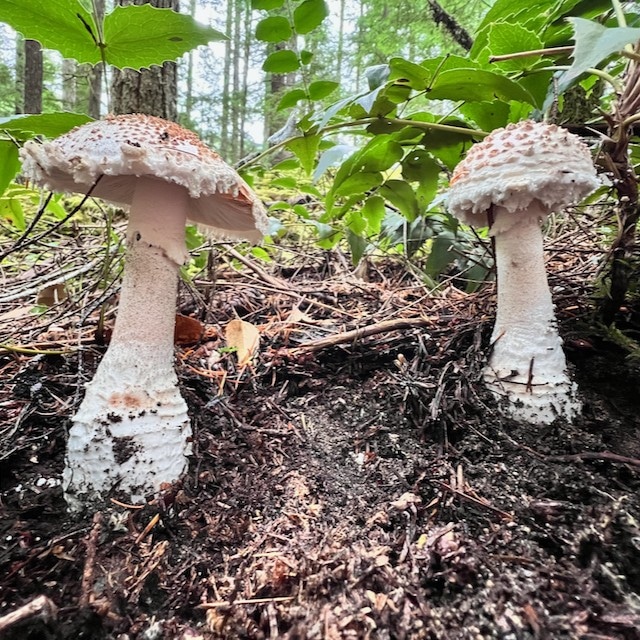
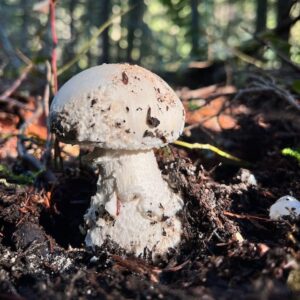
Catathelasma
Notice the decurrent gills on this Catathelasma which attach broadly along the stem. This is different from the matsutake which could have a slight notch, small or broad attachment. Matsutake gill attachment is variable but not decurrent.
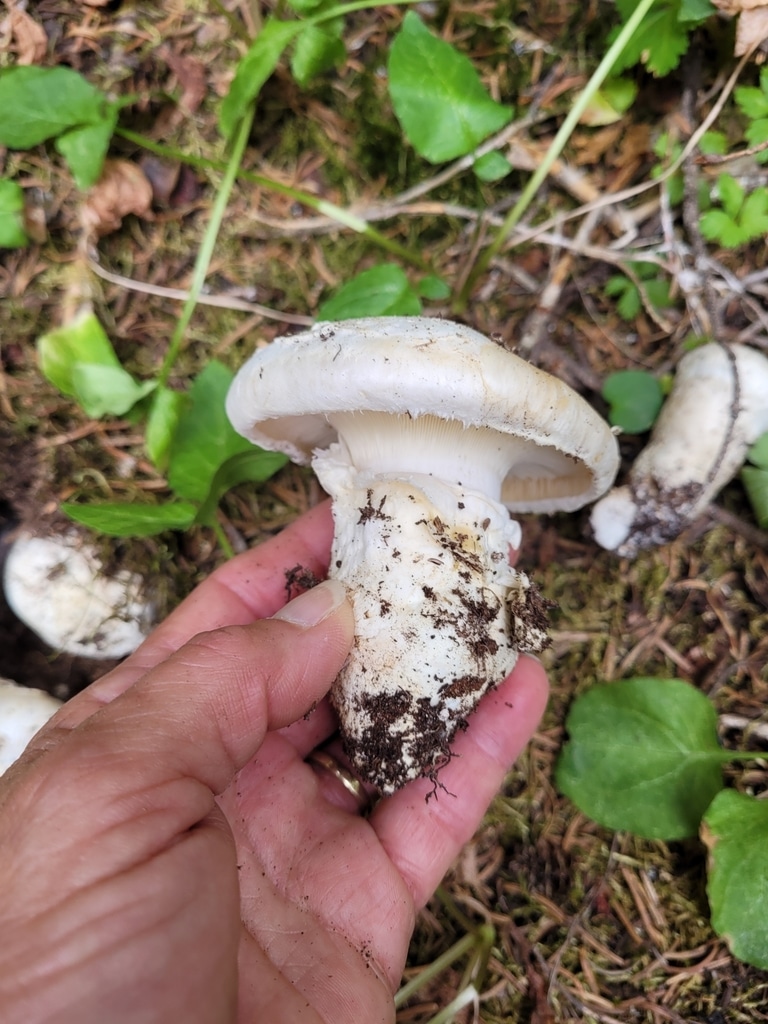
Kathleen Dobson CC-BY via iNaturalist
